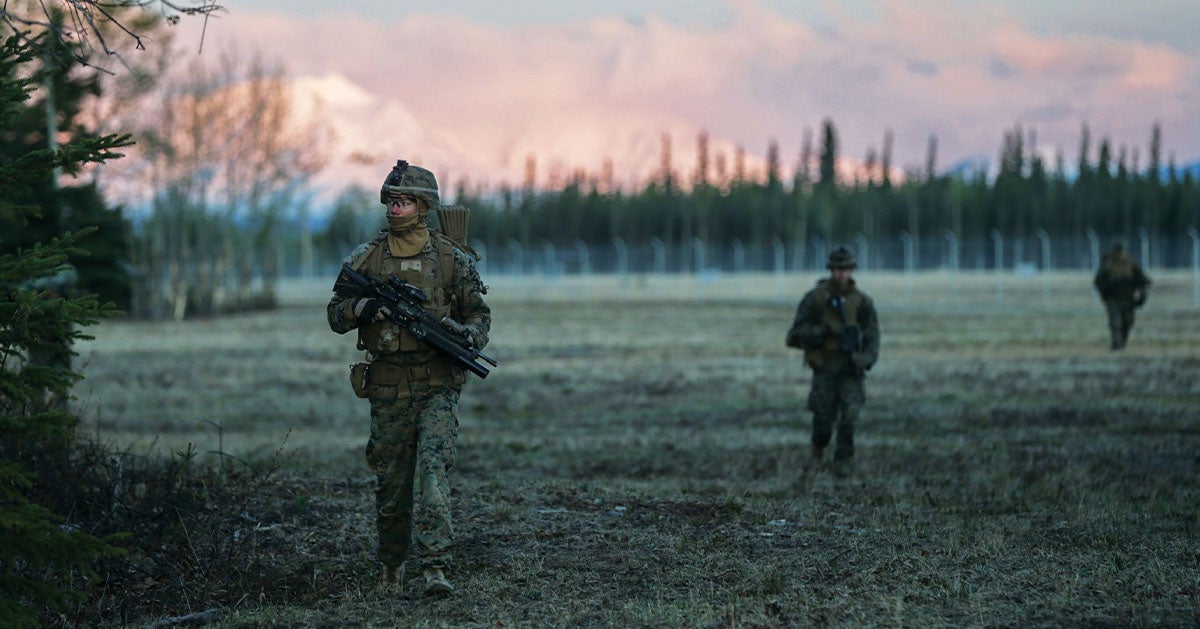Today, according to the Pentagon’s own estimates, the Department of Defense has about 20 percent more infrastructure than it needs to perform its missions.
Installations controlled by the department cover a cumulative land mass roughly equivalent to that of the Commonwealth of Virginia. Twenty percent of Virginia is a substantial area that could be put to better use if transferred back to communities and, ultimately, to the private sector. Nonetheless, the process of base realignment and closures (BRAC) is not designed to reduce the excess to zero; rather historically it has reduced the infrastructure by about 5 percent, which leaves plenty of room for maneuver with force fluctuations.
Every year, from 2011 through 2018, the Pentagon requested authorization to reduce the excess infrastructure through a new round of BRAC. Congress rejected every one of these requests, in essence choosing to keep spending taxpayers’ dollars on unneeded military bases. In the meantime, the dollars we divert to these unneeded facilities are resources the military could be using to improve their readiness and implementing the new National Defense Strategy.
When the emphasis of the National Defense Strategy changes, the infrastructure should follow suit.
Congress has opposed a new round of BRAC for two reasons: fear that bases in their districts will be closed and the perceived shortcomings of the last round of BRAC in 2005. Both reasons have roots in reality, but both can be overcome by better understanding the BRAC process and its results and with some small changes in the authorizing legislation.
Readiness and the National Defense Strategy
Military bases need to be thought of as elements that contribute to the overall readiness of our joint force. Bases have different functions within the broader context of how to generate a ready force, from maneuverable air space adequate for fighters to having enough room to house multiple brigade combat teams, or even just being an advance location close to the area of operations. In some cases, a base might offer a climate ideal for specialized training, or it might offer proximity to centers of excellence in technology. All of these functions are taken into account when assessing the value that a base brings to the force.
A BRAC round allows the Department of Defense to look holistically at all its bases and across its services. During regular day-to-day operations, there is little cooperation between the different services in how they manage their bases. The Government Accountability Office recently identified this lack of cross-service data-sharing as one of the flaws of the current infrastructure. A BRAC round forces the services to centralize their information regarding base management, such as occupancy rates or condition of the infrastructure.
The elements that amount to the necessary military value and readiness for our military bases have changed with the focus on great power competition enunciated in the new National Defense Strategy. When the emphasis of the National Defense Strategy changes, the infrastructure should follow suit. For this reason, the 2005 BRAC Commission recommended that a new round of BRAC should be triggered whenever there is a new defense strategy. That recommendation remains relevant and should be considered by our lawmakers.
The implementation of the new National Defense Strategy would be incomplete if Congress does not allow the Defense Department the chance to properly assess and rationalize its infrastructure portfolio through a new round of BRAC. Without a new round of BRAC, neither the American people nor the Pentagon would have confidence that the infrastructure is fully serving the purposes of our National Defense Strategy.
Outcomes of Closed Bases
One reason many lawmakers oppose new rounds of BRAC is that they fear regions that experience a base closure will never recover the jobs that the base supported.
Michael Touchton, a professor at the University of Miami, has compiled a database tracking the experiences of communities near closed bases. In Salvaging Community: How American Cities Rebuild Closed Military Bases (Cornell University Press, 2019), Touchton and his co-author, Boise State University professor Amanda Ashley, details the results of that research.
One important takeaway from the work is that, on average, communities that lost military bases perform as well as communities with similar characteristics within five years. In a broader sense, the jobs return to the community, not necessarily to the area that the base occupied, but to the region as a whole. Those five years are faster than the 10 years that the Department of Defense has to implement all the approved BRAC actions from any given round.
Further, the book outlines a few best practices for communities to recover from losing a military base, such as having a properly constituted redevelopment authority, or understanding the environmental remediation actions that will be required for future use of the base.
 U.S. Department of Defense via Flickr
U.S. Department of Defense via Flickr
Overall, these bases tend to be large parcels of land that cover multiple local jurisdictions and thus require regional collaboration between the different authorities to have a successful conversion. A good rule of thumb is that the more prepared and connected the community, the easier it will be to transition a military base to civilian uses.
That said, communities should tackle the conversion question with eyes wide open. The process is not going to be fast or simple, and it will require intense collaboration among government authorities that are not necessarily used to working together.
The best thing that any lawmaker can do for the base in their district is to start building the connections between the broader community and the military base. The congressman can and should help develop connections with the local mayoral offices, the local chambers of commerce, and other elements of the base community.
This type of work would help the community while the base is open, and it would serve to jumpstart conversion and redevelopment in case the base ever closes. Further, it will also help bring the military community closer to the broader society it serves.
Of the case studies highlighted by the book, Fort Ord stands out as a case in which the community has been able to navigate the challenge of an extensive environmental cleanup. As pointed out by Touchton and Ashley, the creation of the Fort Ord Reuse Authority allowed the region to create a mixed-use zone in the area, which now includes a university campus, a commercial center, a hospital, and a national monument. The authority is still in place, 26 years after the round of BRAC that closed the installation, working to navigate the multiple jurisdictions and stakeholders in the Fort Ord region.
Molding the Authorizing Legislation
The legislation authorizing a new round of BRAC can address lawmakers’ concerns. Those concerns range from fears that a round of BRAC might cost too much, or that it might reduces the infrastructure by too much. All of these elements can and should be defined in the authorizing legislation.
Multiple lawmakers have expressed concerns about the upfront cost of a round of BRAC. In the summer of 2017, the Senate briefly considered a proposal that would cap the costs of a new BRAC. The proposal would set guidelines for the size of actions that the department could take and how each action fits in the broader context.
When it comes to how much of the infrastructure is reduced, Congress can and should define a target for reduction. By having a target, Congress and the Department of Defense will have a shared understanding of the goal for a new round of BRAC and will thus orient some of the choices. If Congress were to set low targets of reduction, it could also serve to normalize rounds of BRAC and help improve routine management of the process.
Future of BRAC
The Department of Defense will have a great chance to make the case for a new round of BRAC in its budget submission in February 2020, when it is required to present Congress with a new report on its infrastructure. The department needs to make the most of this moment to engage lawmakers in explaining the benefits of a new round of BRAC.
Any lawmakers interested in making sure that military bases are creating military value aligned with the National Defense Strategy, while generating savings, should give BRAC a chance. It is a proven process that has a positive track record on savings and on the outcomes for the communities affected.
Mr. Bartels is a policy analyst at The Heritage Foundation.
